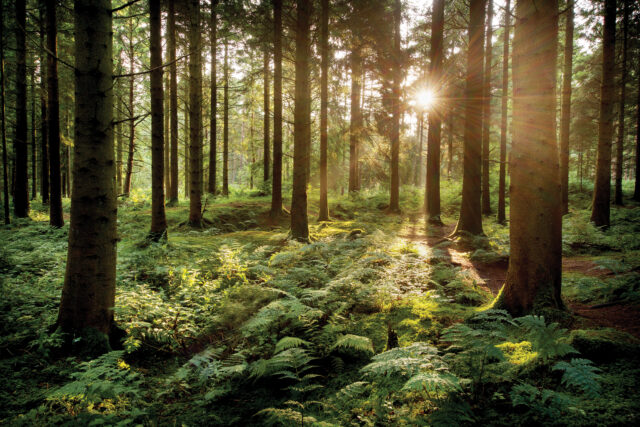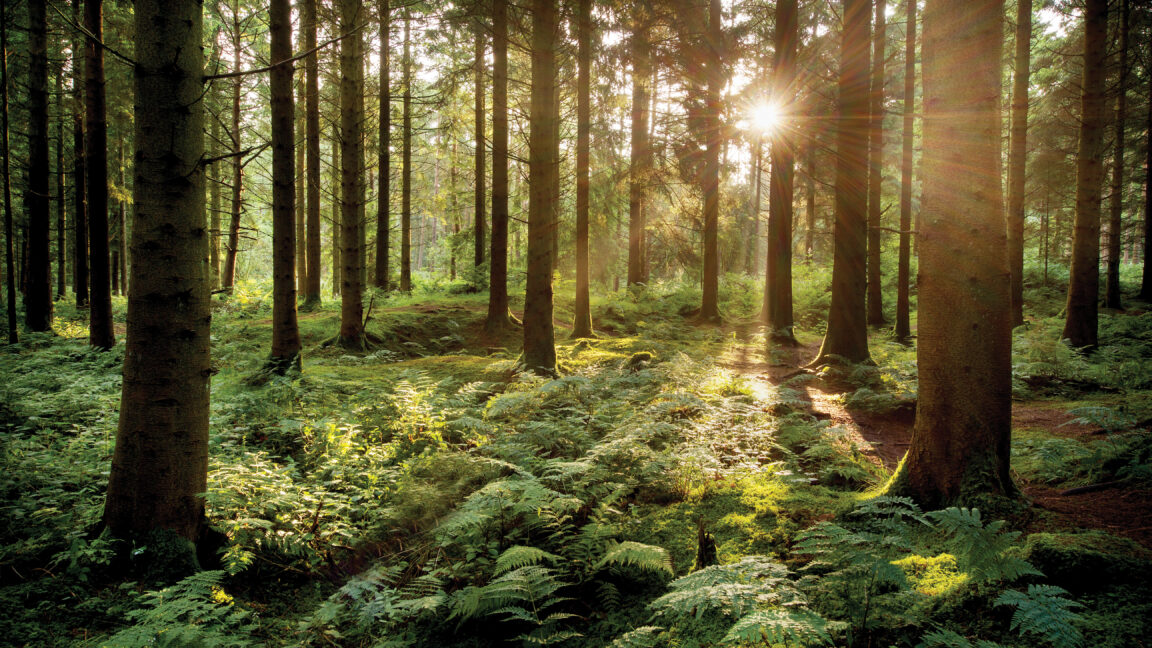Neutrinos are some of nature’s most elusive particles. One hundred trillion fly through your body every second, but each one has only a tiny chance of jostling one of your atoms, a consequence of the incredible weakness of the weak nuclear force that governs neutrino interactions. That tiny chance means that reliably detecting neutrinos takes many more atoms than are in your body. To spot neutrinos colliding with atoms in the atmosphere, experiments have buried 1,000 tons of heavy water, woven cameras through a cubic kilometer of Antarctic ice, and planned to deploy 200,000 antennas.
In a field full of ambitious plans, a recent proposal by Steven Prohira, an assistant professor at the University of Kansas, is especially strange. Prohira suggests that instead of using antennas, we could detect the tell-tale signs of atmospheric neutrinos by wiring up a forest of trees. His suggestion may turn out to be impossible, but it could also be an important breakthrough. To find out which it is, he'll need to walk a long path, refining prototypes and demonstrating his idea’s merits.
Prohira’s goal is to detect so-called ultra-high-energy neutrinos. Each one of these tiny particles carries more than fifty million times the energy released by uranium during nuclear fission. Their origins are not fully understood, but they are expected to be produced by some of the most powerful events in the Universe, from collapsing stars and pulsars to the volatile environments around the massive black holes at the centers of galaxies. If we could detect these particles more reliably, we could learn more about these extreme astronomical events.
Other experiments, like a project called GRAND, plan to build antennas to detect these neutrinos, watching for radio signals that come from their reactions with our atmosphere. However, finding places to place these antennas can be a challenge. Motivated by this experiment, Prohira dug up old studies by the US Army that suggested an alternative: instead of antennas, use trees. By wrapping a wire around each tree, army researchers found that the trees were sensitive to radio waves, which they hoped to use to receive radio signals in the jungle. Prohira argues that the same trick could be useful for neutrino detection.


 Loading comments...
Loading comments...
